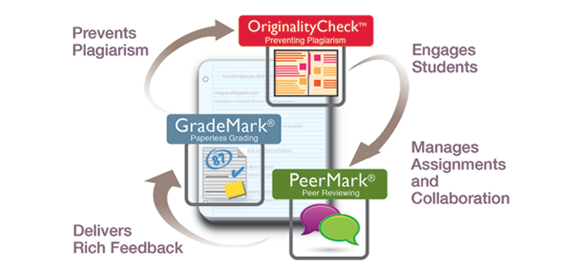I talked with several athletes at Syracuse University. I asked them if they have to submit papers to Antiplagiarism software. Less than 10% of them said they have ever had to do that. After doing some research I found out that a lot of universities have a policy, however it is not strictly enforced. Directly from Syracuse Handbook: II. Academic Integrity Expectations
Academic integrity is violated by any dishonest act which is committed in an academic context including, but not restricted to the following:
- Use of Sources
- Plagiarism is the use of someone else's language, ideas, information, or original material without acknowledging the source.
- Examples of plagiarism:
- Paper is downloaded from an Internet source and/or obtained from a paper mill.
- Paper contains part or all of the writings of another person (including another student), without citation.
- Paper contains passages that were cut and pasted from an Internet source, without citation.
- While students are responsible for knowing how to quote from, paraphrase, and cite sources correctly, the ability to apply that information in all writing situations is an advanced literacy skill acquired over time through repeated practice. When a student has attempted to acknowledge sources but has not done so fully or completely, the instructor may determine that the issue is misuse of sources or bad writing, rather than plagiarism. Factors that may be relevant to the determination between misuse of sources and plagiarism include prior academic integrity education at Syracuse University and the program level of the student. Instructors are responsible for communicating their expectations regarding the use and citation of sources
I would like your opinion; do you believe that Syracuse University (or other schools) enforce their policies?

As both an instructor and a student at SU, I believe that the policy is enforced. I always emphasize for sources to be cited in my classes, and I am careful to cite everything not my own idea in my papers. (This may also be influenced by having been a high school English teacher and college English teacher, too, where citations were necessary.) However, I have never used TurnItIn, either as a teacher or a student.
ReplyDeleteThis is such a problem in my school and many children seem to happy to copy other children s homework and class tasks. I think we should have a school policy like SU
ReplyDeleteLeigh and Vissy,
ReplyDeleteThanks for the comments. Leigh, how do you know if the student has commited plagiarism, without the use of these programs.?
Jason, it depends on the subject. When I taught English literature, I had my students do a lot of writing, both in and out of class. If I read something from a student that did not seem like their normal style, I was wary. Usually, what I experienced was obvious cutting and pasting of information straight from the Internet, and it was just as easy for me to find it as it was for them.
ReplyDeleteWe can help to stop copying, I have to supervise the work in class and I do let student take home. If they copy I check if students have same then they must do it again. I think this is important supervise job for student.
ReplyDeleteThis is different again when your students do not have English as their first language. Copying or Plagiarism, can be a useful tool. It was called 'Drilling' in language classes. So, the answer is, it depends who you are teaching. For example copying words into a word family tree etc.
ReplyDeleteOn the other side, copying can harm students, especially in mathematics where they copy without know the process. This means, to my way of thinking, that we should give more marks for process not the answer.
ReplyDeleteI agree with Leigh. It is easy to tell if my student copy. The style changes in the middle and the English grammar has no mistakes. I challenge students when I see this.
ReplyDeleteLeigh is also correct when she says teachers know their students. If you teach English and especially writing, you know when the writing is not theirs.
ReplyDelete